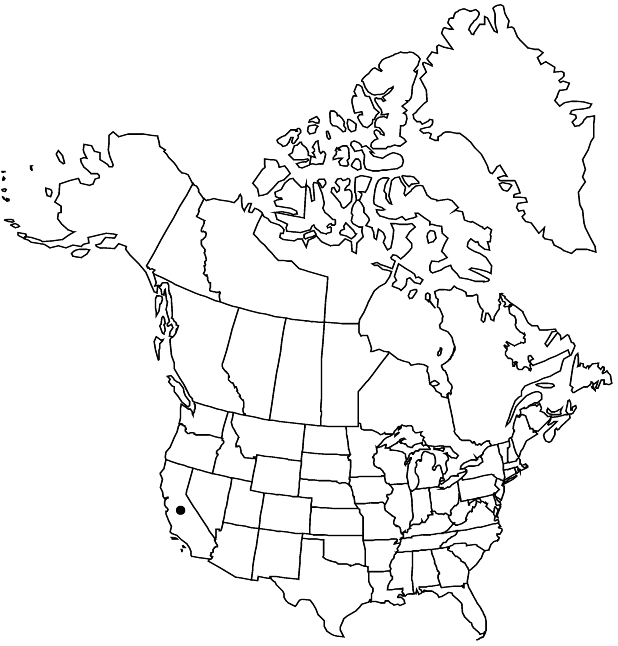Difference between revisions of "Dudleya virens subsp. hassei"
Haseltonia 3: 4. 1995,.
FNA>Volume Importer |
FNA>Volume Importer |
(No difference)
| |
Revision as of 23:02, 16 December 2019
Caudices to 5 dm × 1–3 cm. Rosette leaf blades appearing whitish, rarely green, linear, 5–10(–15) × 0.6–1 cm, surfaces mostly farinose. Inflorescences: floral shoots 1–3 dm × 2–5 mm; cyme broadly obpyramidal; branches mostly simple or 1 times bifurcate; cincinni 3–20-flowered, 2–10 cm. Corollas ca. 16–20 mm diam. 2n = 68.
Phenology: Flowering spring.
Habitat: Cliffs and rocky slopes near sea
Elevation: 0-400 m
Discussion
Of conservation concern.
Subspecies hassei, a tetraploid, is endemic to Santa Catalina Island, where the more widespread diploid subsp. insularis also grows. R. F. Thorne (1969) mentioned that hybrids between these two seem to be rather frequent.
Subspecies hassei flourishes in cultivation, as seen in extensive plantings at Rancho Santa Ana Botanic Garden. In fact, R. F. Thorne (1969) called it their most successful dudleya, almost weedy in its aggressiveness, although that is a characteristic not usually associated with island endemics.
Selected References
None.
